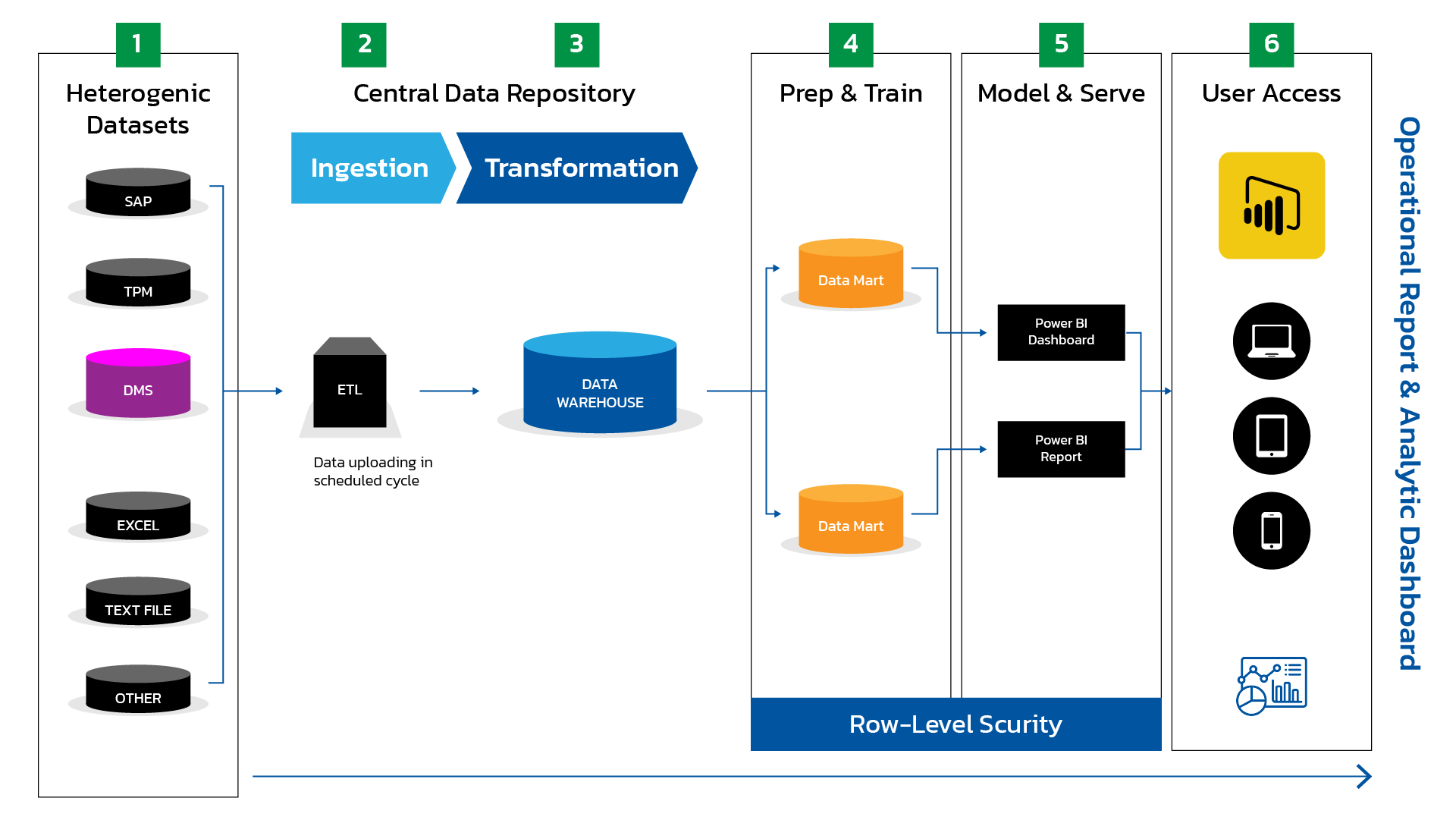Data Warehousing
We help you organise and store your business data in a centralised location for easy access, analysis and reporting.
Typical Challenges
How can I view and analyse data from various sources into one place?
How can I visualise real-time data and insights across multiple departments?
Will my data warehouse solution be able to handle future growth and increasing data volumes?
How can I protect my sensitive data from unauthorised access and breaches?
What’s involved in implementing and managing a data warehouse?
Your Advantages with Collexe

Single Source of Truth
A centralised data warehouse provides a unified view of your business data, enabling you to make informed decisions and understand the relationship between datasets.

Quantify & Justify Decisions
Use the dashboards, visualisations and analysis to make strategic plans that directly impact productivity and profitability.

Functional Coverage
Beyond internal data, we can leverage external sources to provide insights into, promotion and pricing insights, competitor analysis, effectiveness of marketing campaigns competitive pricing analysis, performance across different retailers, brand-specific analysis and insights.

Scalability and Security
Our solutions are designed to handle growing data volumes and ensure the highest level of data security according to industry standards regulations.
Our Solution
Our data warehousing solution can help you combine data from multiple sources, creating a single source of truth that you can use for reporting, machine learning, marketing automation and more.
What’s the process?
Planning →
Assess your data needs and define your data warehouse requirements.
Technical Execution →
Implement the data warehouse infrastructure and ETL processes.
Data Visualisation & Reporting
Create dashboards and reports to visualise your data and generate actionable insights.
Planning →
Technical Execution →
Data Visualisation & Reporting
Assess your data needs and define your data warehouse requirements.
Implement the data warehouse infrastructure and ETL processes.
Create dashboards and reports to visualise your data and generate actionable insights.
How does it work?

Data Sources
Various sources (e.g., databases, APIs, files).

Data Ingestion
ETL (Extract, Transform, Load) process.

Data Warehouse
Centralised data storage.

Data Preparation
Data cleansing, normalisation, and mapping

Data Modeling
Designing the structure of the data warehouse to efficiently store and retrieve information. This involves creating tables, relationships, and rules for how data is organised.

Data Delivery
Provide access to data through comprehensive dashboards, reports, or APIs.

Do you
need Data Warehousing?
Most companies using more than one platform across their organisation (production, sales, marketing, distribution, management, finance) or organisations with offices across several locations can benefit from implementing a data warehouse to track deeper metrics and make critical business decisions about promotions, performance and productivity.









